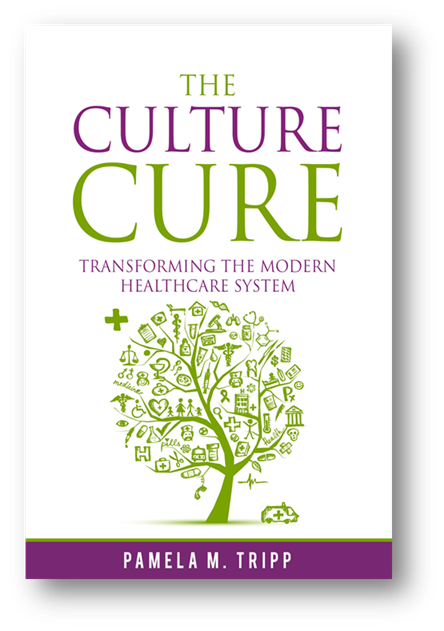New Continent of Healthcare
With major land shifts that move America’s healthcare systems to Patient-Centric Care and Value-Based Purchasing, the beckoning question for healthcare leaders becomes: Can I continue to lead my organization in my traditional way, obtaining the results that I am more accustomed to? Do I need to lead differently, if so how, and will this new leadership style deliver the organizational results required to survive and thrive in this new continent of healthcare delivery in America?
There is no doubt that leading proactively to stay ahead of the curve balls in America’s rapidly changing healthcare industry demands a new approach to achieve success with employees, culture, quality of care, finance, and governing regulatory deliverables.
The success of these expectations and demands will depend on the specific influence that healthcare leaders possess. John C. Maxwell, recognized as the number one leadership expert in the world states, “Leadership is influence, nothing more, nothing less.” A intentional leadership philosophy of values and behavior will be essential to influence the healthcare workforce in delivering the excellence expected in healthcare.
Aligning Expectations, Deliverables to Workforce
To lead effectively, there must be people willing to partner with you. It is important to align strategic goals and expectations with the individuals that will make it happen. Extremely important is to have employee engagement so the organizational unit will progress forward in unison. Leaders dream of this optimal reality.
Matching Values: Leaders and Colleagues
When asking healthcare workers to describe the culture of the work environment they desire, what would their answers be? Here are a few that I find to be frequently echoed.
Highlights of Culture Workers desire:
- Teamwork
- Respect
- Care
- Compassion
- Empathy
- Trust
- Integrity
- Excellent quality of care
- Fairness
- Great leadership
- Personal pride in their organization
Recognizing the needs and values of what healthcare workforce desire is the first step in successfully meeting the goals within the value based and patient centric environment. One cannot work against the other.
So the question becomes how do we marry the deliverables needed to propel the organization to excellence by a highly engaged workforce?
Unfortunately, many times it is at this juncture that a new reality reveals itself. Let’s ask leaders or employees how do we achieve this desired work environment and there seem to be a scarcity of anecdotes offered up?
Mines of the Mind
Problems, excuses or justifications have been:
- We need to hire more workers (but can not afford them.)
- Everyone is so busy and stressed in our organization, it is not going to get any better.
- Healthcare is such a anxious and exhausting environment.
- Our employees need to do more or less of this or that.
- The government or other regulatory demands never cease, there is a new regulation it seem everyday, and it is just too overwhelming.
- Leadership says we have to do more with less, do not know how we can work any harder. Our patients have so many expectations, it is difficult to meet all of them.
- Leadership just does not understand us, or leadership feels employees just do not understand the importance of why they have to lad a certain way.
- Doctors want what they want, and do not understand the cost, that is never going to change.
These answers also most often begin with an “IF” or “IF they….” Statements that sound like this: “If this was not happening, or if they would not do this or that, everything will be much better!” The majority of time the answer rolls back to pointing out flaws or faults in colleagues, leadership, patients, doctors, government, or accrediting and regulatory entities. This is a sad but a common saga for healthcare in 2016.
The need to find the person or thing at fault easily takes over to justify the undesired situation. Blaming others always helps to justify avoiding personable accountability. There appears such a need to do this, to relieve some of the pressures building inside, and is another outlet to allow oneself to feel better about the situation or themselves. This behavior can be very commonplace.
So the marriage of leadership and colleague’s values and alignment goals, energy, and efforts, sounds more like a dialogue out of divorce court.
The list of excuses and justifications for the status quo seems inexhaustible and so it is so easy to continue to do what we always have and obtain the same results.
The Dead End Road
When there is not awareness of solutions to these problems, the end result is a culture that does not fosters a harmonious work environment or creative ways of thinking, or appreciates innovations, and values collaborative team critical thinking. The culture becomes like traveling down a street that comes to barriers with a “Dead End” sign. Nowhere to go, but to go back where you came from. A repeating cycle of the past mistakes emerges.
The fact is: We are where we are because of the way we think. If we do not like where we are, then we need to change the way we are THINKING!
A New Path to Rebirth
A new approach for leadership comes from knowing how to bed the organization in a culture cradle of care. Organizational Health becomes the priority focus. The new path to change an organization from status quo to excellence must begin with a culture change that delivers a new mindset. The operational infrastructure must be built to achieve this through a systematic, well-designed culture curriculum. It is within the development of the organizational culture that excellence is birthed in all critical areas of the organization; finances, quality of care, and governance. There can be no shortcut to addressing or supporting a culture that fosters a healing environment versus a toxic environment.
The key to America coming to lead in the global healthcare industry comes first and foremost from not trying to externally “fix” people; it comes from “fixing” the environment that will affect thinking and result in new behaviors.
Culture Core Curriculum
In order to filter out toxic thinking in healthcare environment so common in our institutions, I’ve developed what I call The Culture Cure Curriculum. This blueprint drives a 360 degree excellence environment. It delivers a high-touch relationship and communication directly from the front line of your organization to the C-Suite. Similar to a well orchestrated symphony, people and processes are intentionally led and developed in a structure that yields an environment of excellence and continual improvement. This curriculum empowers healthcare organizations to become self-propelling, perpetuate themselves, and to never again be satisfied with status quo. It creates an environment where people believe that their excellence tomorrow is always greater than their excellence today.
The best answers always come from the workforce within, composed of people who are valued by leadership and one another, and are allowed to share their unique strengths, passions, and ideas in order to create sustainable innovation. The C-suite, leadership teams, management, and frontline colleagues become the curriculum conductors. All members of the team become mentors to help establish core values of excellence. The Core Curriculum is designed to engage all colleagues and influence their abilities and value so they can collaborate to release the best outcomes for the organization. It is past time for a Culture Cure Curriculum in healthcare today!
The Culture Cure
Learn more about the Culture Cure Curriculum in Pamela’s upcoming book The Culture Cure: Transforming the Modern Healthcare System. Coming in print and digital formats, Summer 2016.




